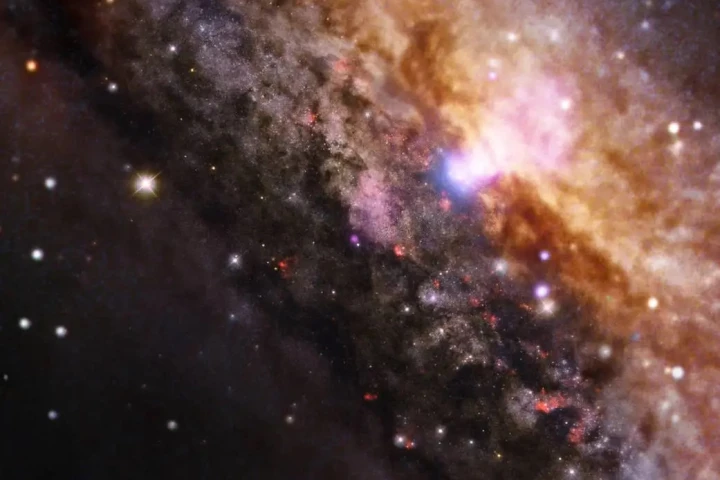ALMA
-
Astronomers have discovered a new celestial object in the galaxy NGS 4945 about 12 million light-years away. Its light is polarized at an almost impossible level that hints at a perfectly aligned magnetic field. The object has been nicknamed "Punctum".
-
The Sun is the biggest fish in our small pond of a solar system, but it’s a mere minnow compared to the whales that dwell out in the cosmos. New telescope images show a gigantic star casually blowing bubbles 75 times bigger than our Sun.
-
Astronomers using an array of 66 radio telescopes have discovered what may be the first example of a star with two exoplanets circling it that share the same orbit, something that was thought to be theoretically possible but never seen until now.
-
Astronomers have discovered the most distant object ever seen – a strange galaxy some 13.5 billion light-years away. Named HD1, the galaxy may house a never-before-seen population of stars, or a supermassive black hole mysteriously ahead of its time.
-
A strange star just got even stranger. In the midst of its death throes, the star V Hya has been belching out a series of rings and plumes of materials, in a pattern never before seen from a dying star.
-
Astronomers have spotted two “invisible” galaxies hiding near the dawn of the universe. The team used radio waves to peer behind a curtain of dust, and the find suggests that there were far more galaxies in the early universe than previously thought.
-
One Sun is plenty for our solar system, but some planets have been found orbiting two stars at once. Now the ante has been upped again, with evidence emerging of a planet orbiting three stars at once.
-
Astronomers have captured the first clear images of a colossal moon-forming debris disk orbiting a distant alien planet. According to the authors of the new study, the disk has enough material to create three satellites the size of Earth’s Moon.
-
Supermassive black holes create turbulent environments at the centers of galaxies, which should disrupt star formation. But astronomers have peered closer at the heart of the Milky Way and found several “stellar eggs” – and they seem to be hatching.
-
In September 2020, astronomers announced the discovery of phosphine in the atmosphere of Venus, a possible sign of life. But a new study has found that a different gas could explain the signature – one that's more common and doesn’t indicate life.
-
While Mars may be the most likely place we might find life beyond Earth, it's not alone. High in the atmosphere of Venus, astronomers have made the startling discovery of a gas called phosphine – a strong contender for a sign of microbial life.
-
The way things are in our solar system aren't always how they work elsewhere in the universe. Now, astronomers have observed a triple star system that’s warping and splitting its planetary disc into strange new shapes and multiple rings.
Load More









